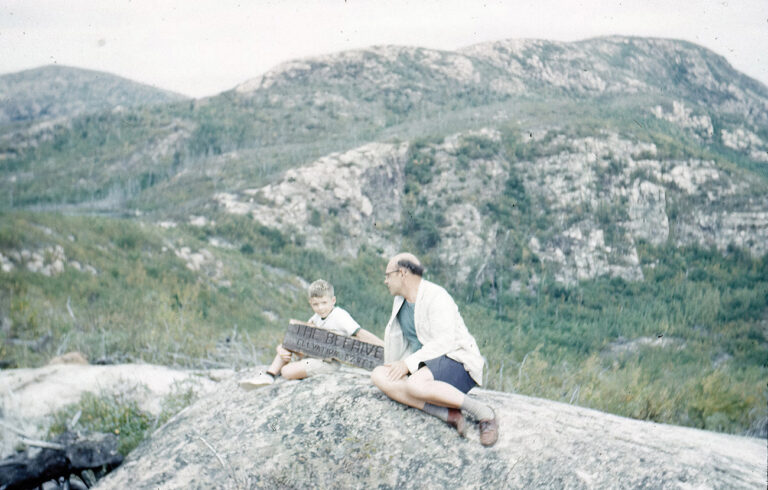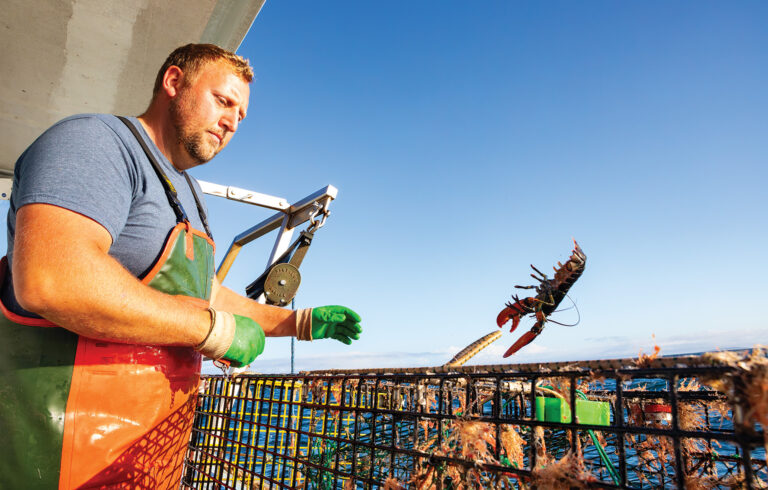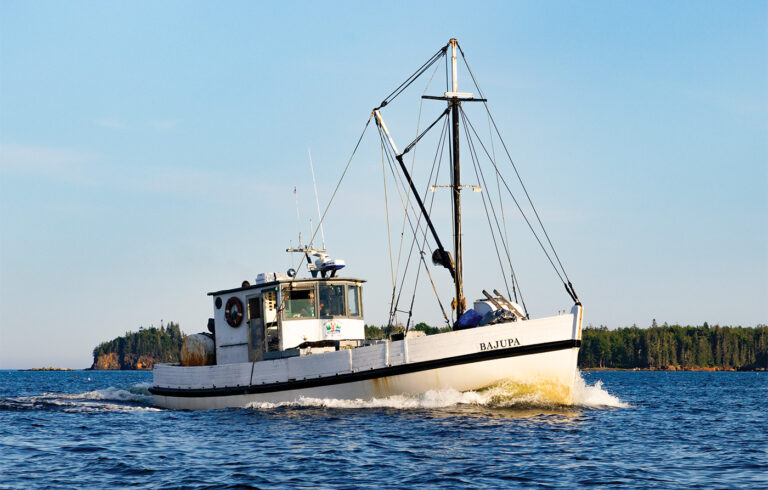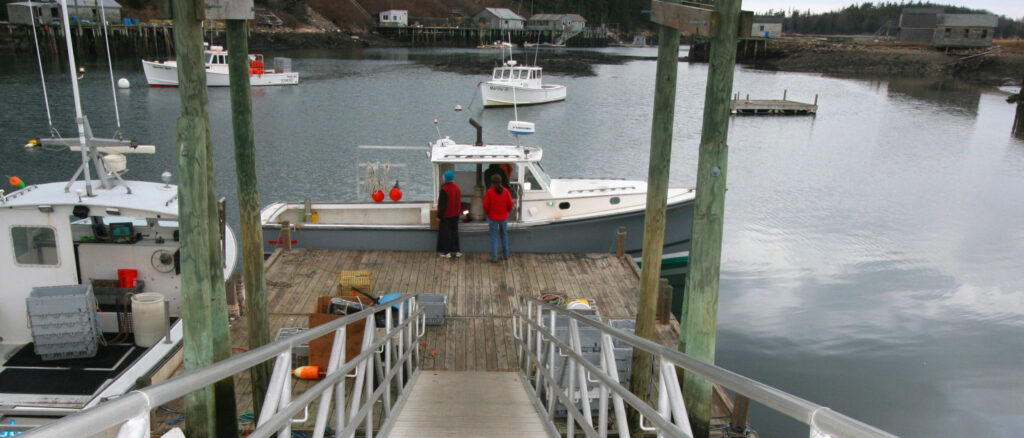
On a late autumn, hard-charging Thursday, Brian Krafjack starts the morning on the computer, spreadsheets open for inventory and bookkeeping, social media posts about freight arrivals and specials du jour. He and his wife Kathy own The Island Market & Supply on Swan’s Island. Like many island retail operations, TIMS—as islanders call it—is much more than a store.
Case in point: The Krafjacks’ Thursday morning tasks actually were started the evening before when fisherman Les Ranquist brought Brian a haul of scallops, and long-time postman/freight deliveryman L.J. Hopkins sent an unexpected delivery of freight, loaded in his van, on the ferry on the last run of the day.
The Krafjacks stowed the scallops, drove to the ferry terminal to pick up the van, then unpacked several dozen boxes from the van into TIMS’ cramped back office.
Their labors of Wednesday evening meant posting Thursday’s scallop special on the store’s Facebook page and cataloguing freight packages and posting those on the Swan’s Island information Facebook page first thing in the morning so people knew to pick up their merchandise. All that before preparing for a day of actually running the store.
But there’s more–a lot more–to be done on this autumnal Thursday.
The Krafjacks oversee the food truck parked adjacent to the store, deliver vendor orders to Swan’s Island Elementary School, and take the noon freight delivery for Swan’s Island as well as freight and mail for the neighboring island of Frenchboro. That island’s groceries are delivered by boat, and its mail is picked up in time to drop off at the Swan’s Island Post Office to make the next ferry to the mainland.
Then it’s back to the store to sort and catalogue the noon freight, catalogue and put in orders to mainland providers for goods, and fill orders that have been coming in via text, phone, and social media throughout the day from individuals, businesses, and other entities, and pick up, fill, and deliver 100-pound propane tanks.
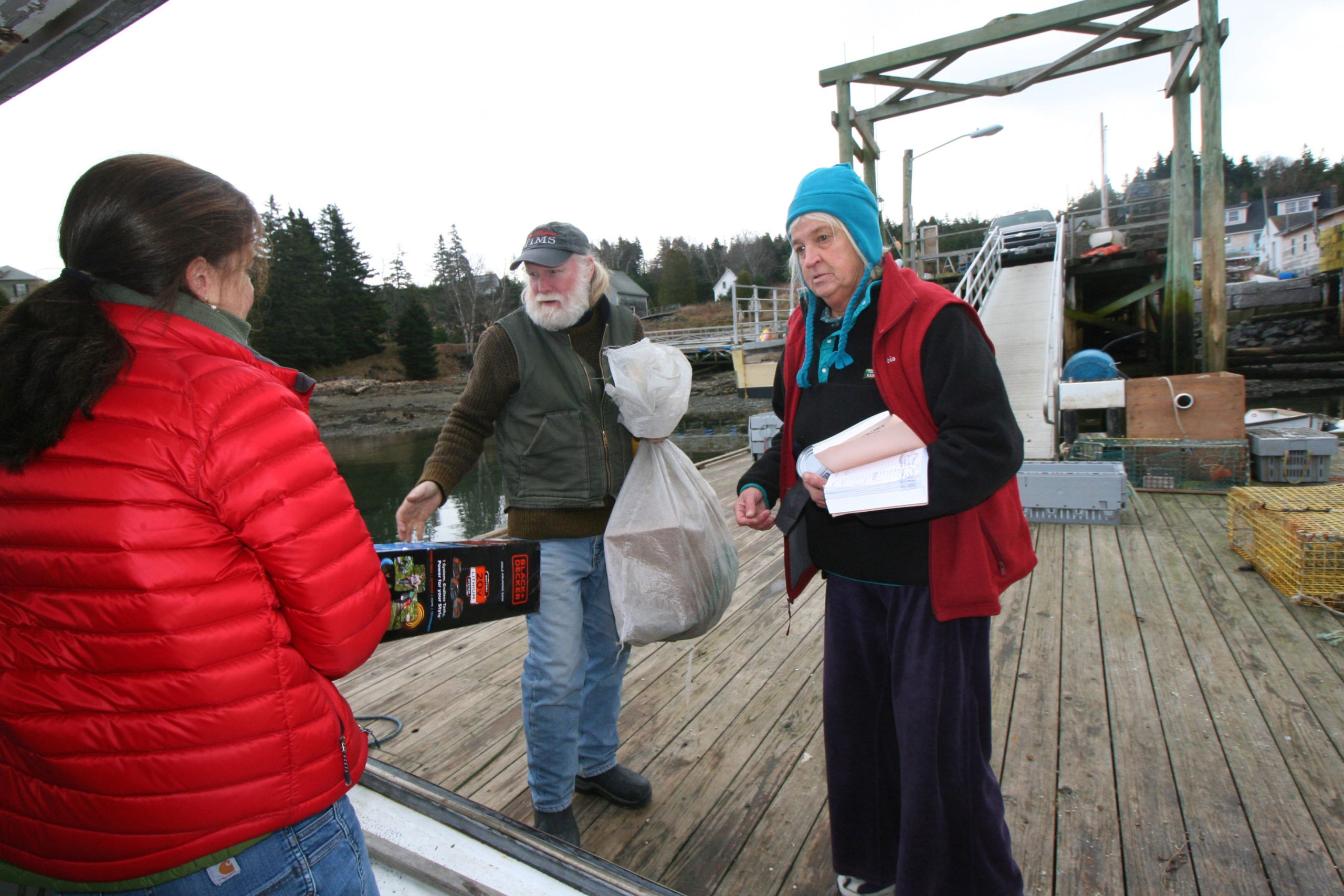
And amid all the work for their store, Kathy creates and exhibits her own art work, and Brian volunteers as a firefighter, is an architect and photographer, and publishes weekly social media essays that have become a popular read.
The Krafjacks’ days are a whirlwind of activity, sometimes not ending until midnight or later, surging in the summer, fading back a bit in the winter.
“It’s taken us a while to figure it all out,” said Brian.
It’s all worth it. In just the three years since moving to the island and opening their store, they and the community have embraced each other.
“It’s every day an adventure,” says Brian. “I don’t know that we could have even imagined the details. Going into it, I
figured it would be hard work. Most things worth anything are hard work. People say, ‘Do you get to go on vacation?’ I look at Kathy and say, ‘We are on vacation. We’re working hard, but we get to be here.’”
TIMS is a vital center of community life for this unbridged island—year-round population 350, summer 1,200 to 1,500. Perhaps that’s no different from countless small communities—island, mainland, or even big-city neighborhood—that have their own gathering spots.
But TIMS and stores on other unbridged islands fulfill needs and face challenges particular to their geography. It’s not easy to get to the mainland and back except, mainly, by ferry, and that’s expensive, schedule- and weather-dependent, and time-consuming. So, island stores are not just a fun gathering place or picturesque imagery for visiting photographers. They’re one of several pillars that help ensure the community’s life, health, and safety.
“When you’re a visitor, which we were for many years, you’re here because it’s a beautiful place and your friends are here,” says Tom McAloon, a year-round resident with his wife Bev since 2009, who’s stopped in to pick up some of those scallops. “But you’re here for a short time. Our take on the community was that it was a magical place. It’s still a magical place, but now it’s also a real place. We need to explore the issues, like how does this store make it? This island needs the store. We need L.J. (Hopkins) and what he provides. When you live here year-round, you realize it more acutely than if you’re a visitor.”
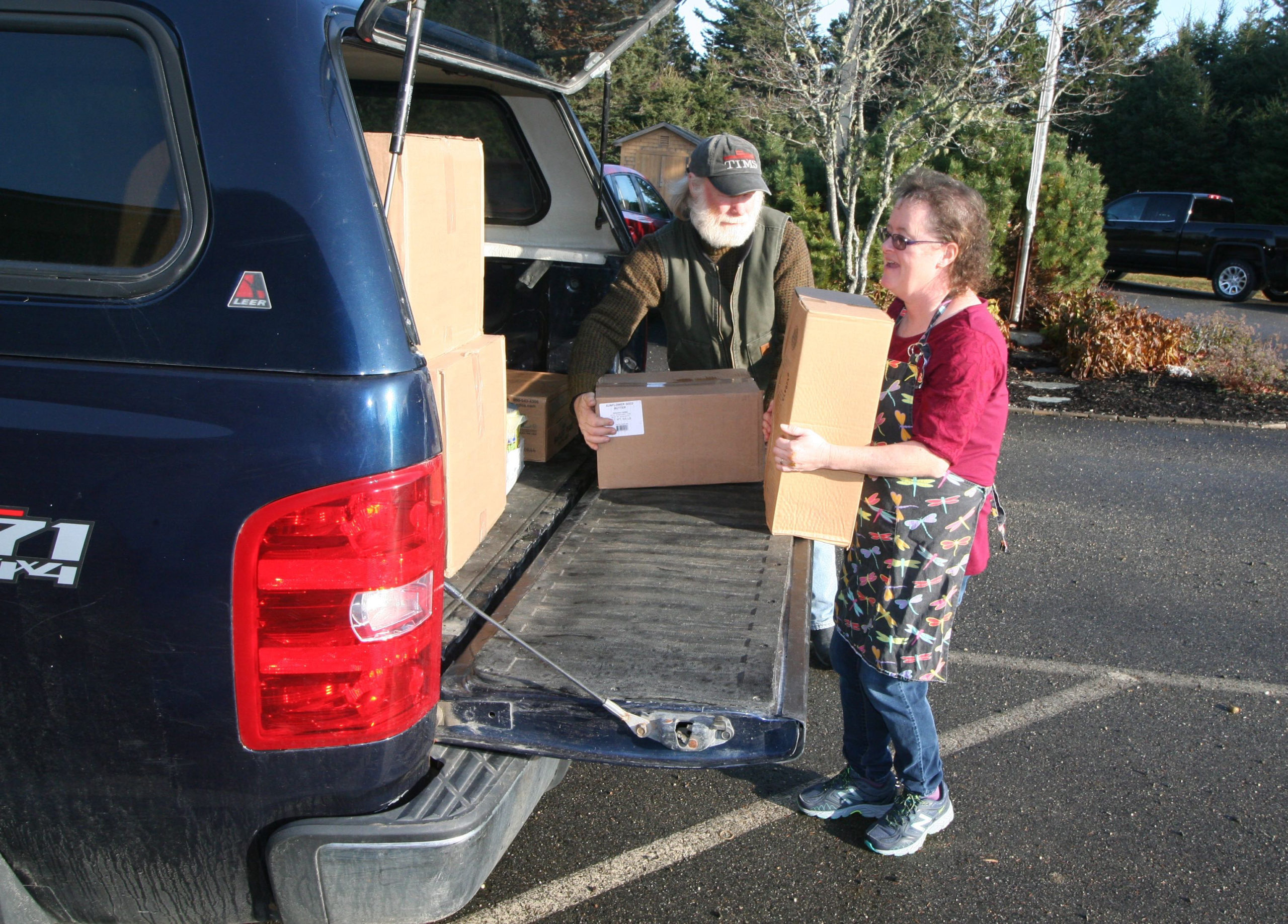
The Krafjacks shared that sense when, in 2014, they uprooted themselves from prosperous careers in
Stonington, Connecticut to buy The Carrying Place, then owned by David and Cindy Niquette. The Krafjacks wanted to live on an island–running the store seemed like a great way to achieve that goal. They renamed it, inherited a core group of employees, and were off.
Now in their third winter, they reflect on the learning curve.
“Nothing happens as planned,” said Kathy. “You start the day with a plan and find out the boat’s late or the freight’s not coming or somebody’s sick. You have to learn to adjust and adapt and be resourceful.”
Island culture, though, means not having to figure things out alone. Folks want a store, so they help the storekeepers make it successful.
“They go out of their way to help you out,” she said. “That’s been an eye-opener.”
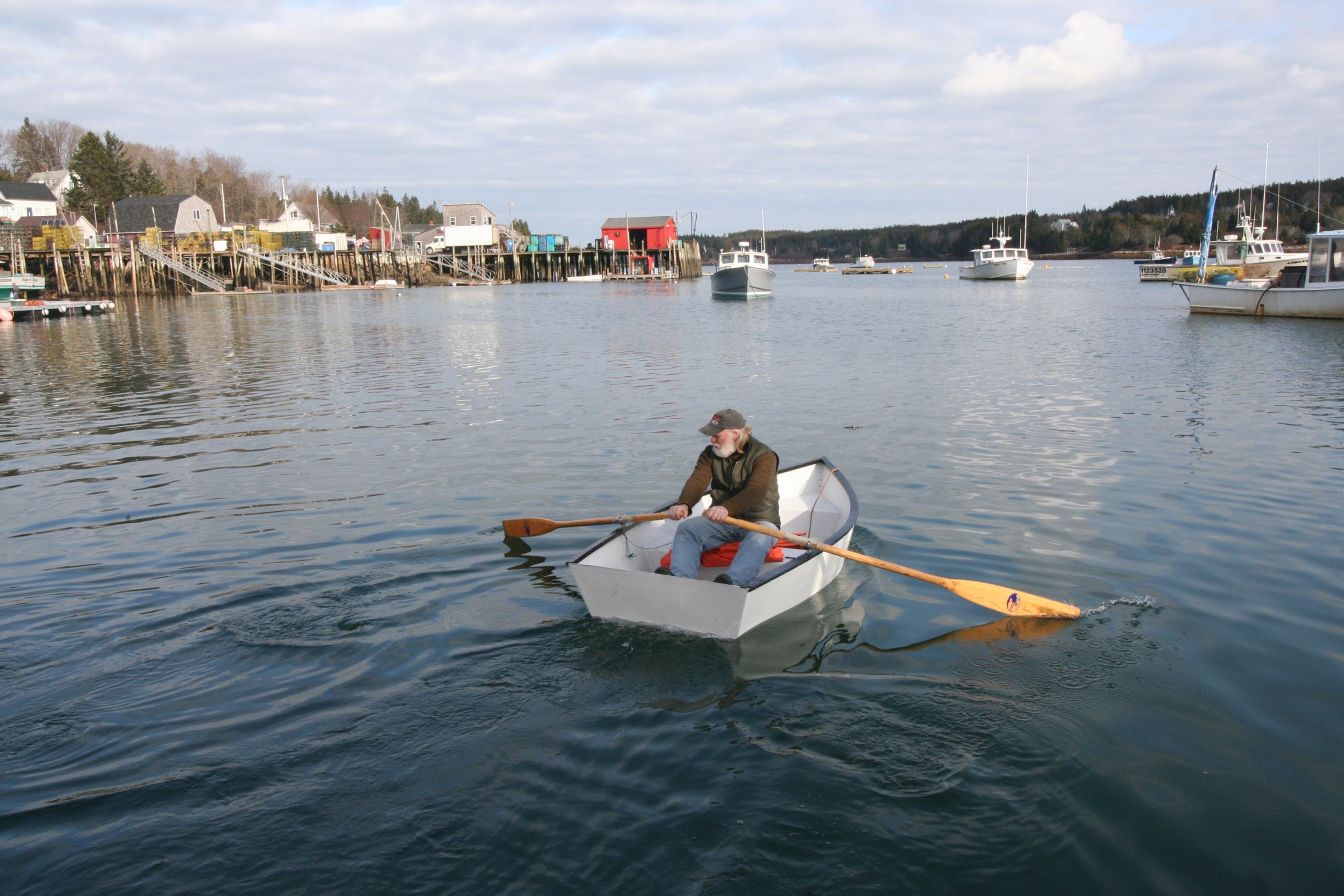
“Going into it, I figured it would be hard work. Most things worth anything are hard work.”
— Brian Krafjack
At TIMS, diversification is key to making the store work year-round. They’ve continued the Niquettes’ Pizza Friday—a big hit—but made it year-round. The takeout’s lunch specials are popular. They stock specialty breads, meats, cheeses, and delicacies from the mainland. The Krafjacks are considering building greenhouses to grow produce. Earlier this year, they bought a boat to take on the Frenchboro mail sub-contract, which also makes bringing groceries out financially viable. Two summers ago, they became the island’s propane dealer.
In the end, though, winter operations are financed by summer profit, itself running on slim margins.
“It all helps,” Brian says. “You have to do a lot things to make it all work.”

